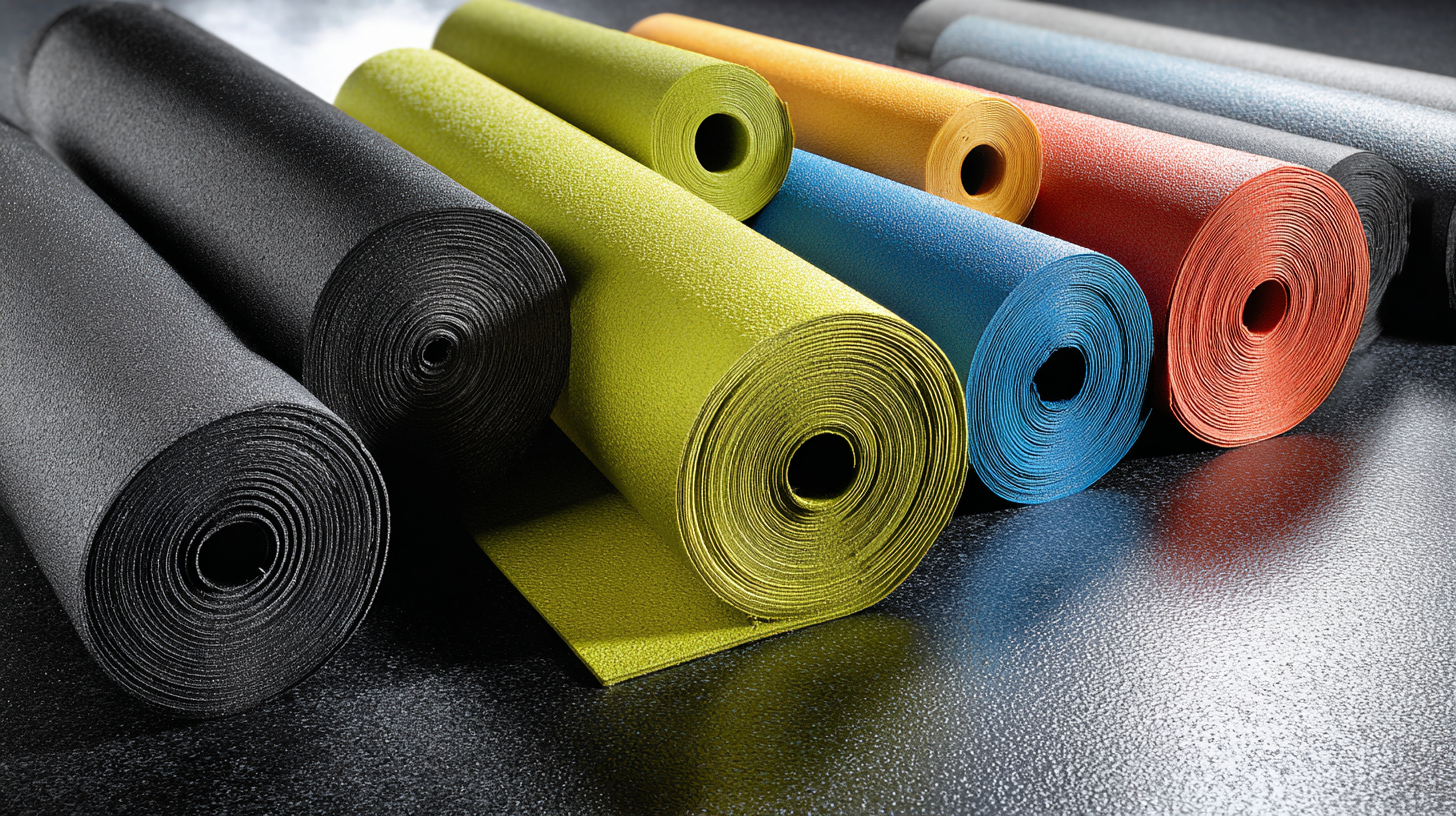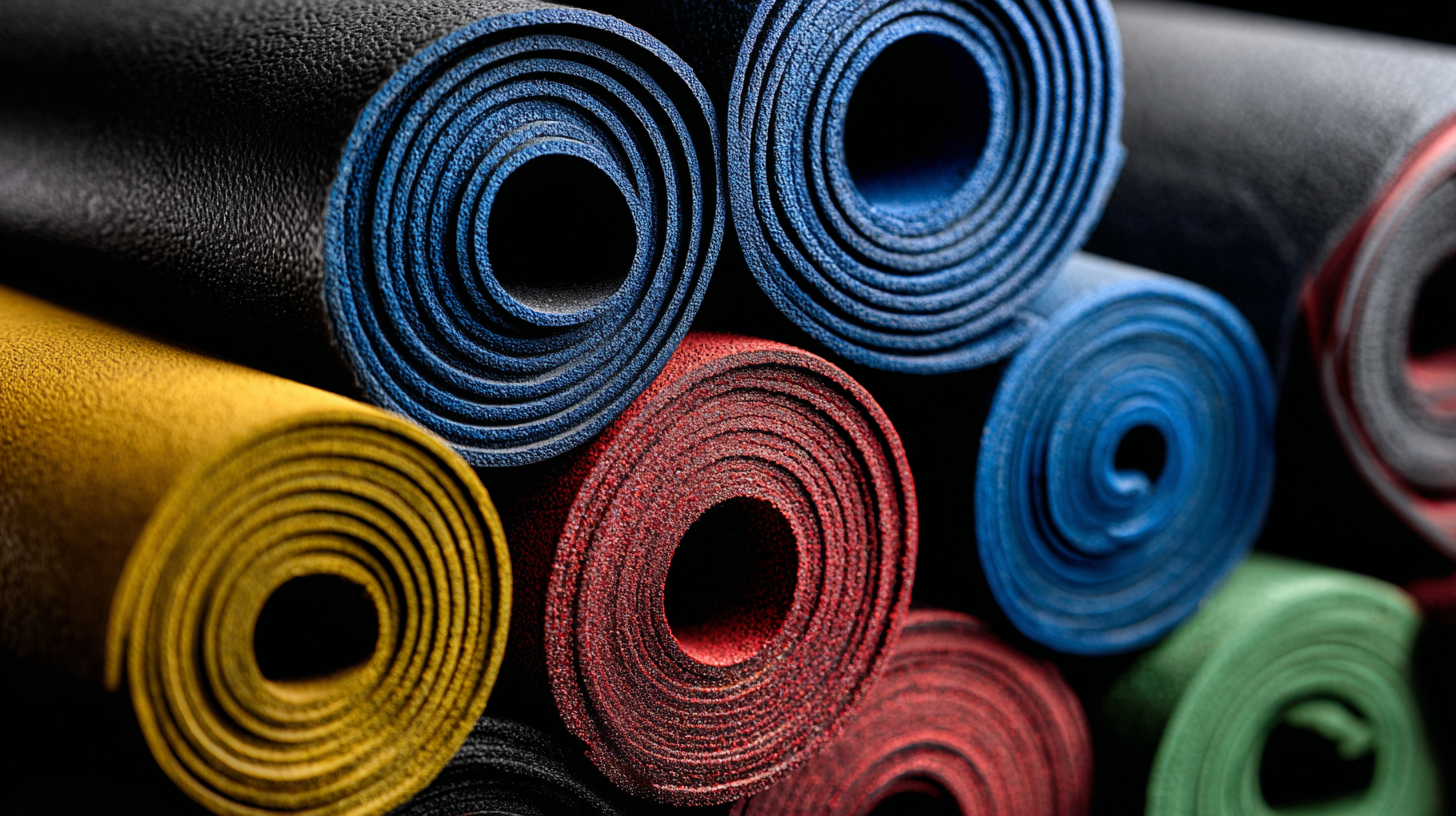When it comes to creating functional and safe environments in both residential and commercial spaces, the choice of flooring can significantly impact usability and aesthetic appeal. Among the various flooring options available in today’s market,
Rubber Floor Matting stands out due to its versatile applications and practical benefits. According to a report by Grand View Research, the global rubber flooring market is expected to reach approximately $6.70 billion by 2025, driven by increasing demand across industries for durable and slip-resistant solutions. This highlights the growing recognition of Rubber Floor Matting's role in enhancing safety and comfort.
One of the key advantages of Rubber Floor Matting is its ability to provide both traction and cushioning, making it ideal for high-traffic areas such as gyms, commercial kitchens, and workshops. The National Safety Council reports that slip and fall incidents account for a significant percentage of workplace injuries, underscoring the necessity of effective flooring solutions. Given this context, selecting the appropriate Rubber Floor Matting becomes a critical decision that can influence not only safety but also the overall ambiance of the space. This article will explore ten essential tips to consider when choosing the best Rubber Floor Matting for your specific needs, ensuring optimal performance and longevity.

When selecting rubber floor matting, it's crucial to understand the various types available in the market. The options typically include interlocking mats, roll-out mats, and textured mats, each serving different purposes and environments.
Interlocking mats, often used in gyms or play areas, provide cushioning and can easily be rearranged to fit any space. Their design allows for easy installation and customization, making them a popular choice for both residential and commercial applications.
On the other hand, roll-out mats are ideal for larger areas that require a seamless surface. They are often used in industrial settings or high-traffic zones due to their durability and ease of maintenance. Textured mats, meanwhile, are designed with non-slip surfaces, making them perfect for wet environments like kitchens or bathrooms. Each type of rubber matting offers unique benefits, so understanding their characteristics is essential for making an informed decision that meets your specific needs and enhances your space.
When selecting rubber floor matting, durability and performance ratings are paramount factors to consider. The longevity of a mat directly impacts its overall effectiveness in high-traffic areas. To evaluate durability, look for mats made from high-grade rubber compounds that are designed to withstand heavy use without significant wear and tear. Features such as tear resistance and UV stability also contribute to the lifespan of the mats, particularly in environments exposed to sunlight or harsh conditions.

Performance ratings provide insight into how well the mat will serve its intended purpose. Consider factors such as slip resistance, shock absorption, and ease of cleaning. Mats with high slip-resistance ratings are crucial for safety in commercial spaces where wet or oily conditions are likely. Additionally, assessing the mat's ability to absorb impact can enhance comfort and reduce fatigue for individuals who stand for extended periods. Always check for certifications or third-party testing to ensure the mats meet industry standards for performance and safety, making your choice both informed and reliable.
When selecting rubber floor matting for your space, assessing safety features and slip resistance standards is crucial. Rubber flooring is often favored for its durability and versatility, but not all products are created equal. It’s essential to look for mats that meet specific slip resistance standards, such as the ASTM D2047 or the DIN 51130. These standards help ensure that the surface can provide adequate grip, especially in wet or high-traffic areas, minimizing the risk of slips and falls.
Additionally, consider the texture and thickness of the matting. A textured surface can enhance slip resistance by providing better traction for foot traffic. Thicker mats not only absorb impact, reducing fatigue for those who stand for extended periods, but they also contribute to stability. It's also worth checking if the chosen rubber matting exhibits other safety features, such as fire resistance and ease of cleaning, to further enhance the overall safety and functionality of the space. By focusing on these aspects, you can select the right rubber floor matting that prioritizes safety without compromising on quality or aesthetics.
When choosing rubber floor matting, it's crucial to weigh the initial investment against potential long-term benefits. Industry reports suggest that high-quality rubber mats can save up to 15% in maintenance costs over their lifespan compared to cheaper alternatives. While the upfront cost might appear higher—ranging from $2 to $5 per square foot—these mats offer substantial durability, often lasting 10 years or more, making them a cost-effective choice in the long run.
One vital tip for selection is to assess the specific use case of the mats—consider traction, cushioning, and water resistance. For instance, mats designed for high-traffic areas not only enhance safety but also reduce wear and tear on flooring, thus preventing costly repairs. Another important factor is to evaluate the manufacturer's warranty; those that provide a longer warranty often indicate higher confidence in their product's longevity.
Additionally, incorporating anti-fatigue mats in workplaces can boost productivity by reducing discomfort for standing employees. Research has shown that comfortable flooring solutions can lead to a 10% increase in employee output, translating to better overall business performance. Investing wisely in rubber matting not only improves safety and comfort but also contributes to long-term cost efficiencies.
When selecting rubber floor matting, sustainability is an increasingly important consideration. Eco-friendly options are now available that not only minimize environmental impact but also provide robust performance. Look for matting made from recycled rubber, which helps reduce waste and promotes a circular economy. These mats often come from post-consumer tires, contributing to a reduction in landfill waste while offering durable, high-quality flooring solutions.
Another key aspect to consider is the manufacturing process of the rubber matting. Products that adhere to strict environmental standards and use non-toxic adhesives are ideal. Certifications such as Green Seal or ISO 14001 can further assure the sustainability of your choice. Additionally, consider the longevity of the product; longer-lasting mats can decrease the need for replacements, ultimately leading to less waste over time. By prioritizing eco-friendly options, you can create a sustainable space that aligns with environmental values without sacrificing functionality or style.






